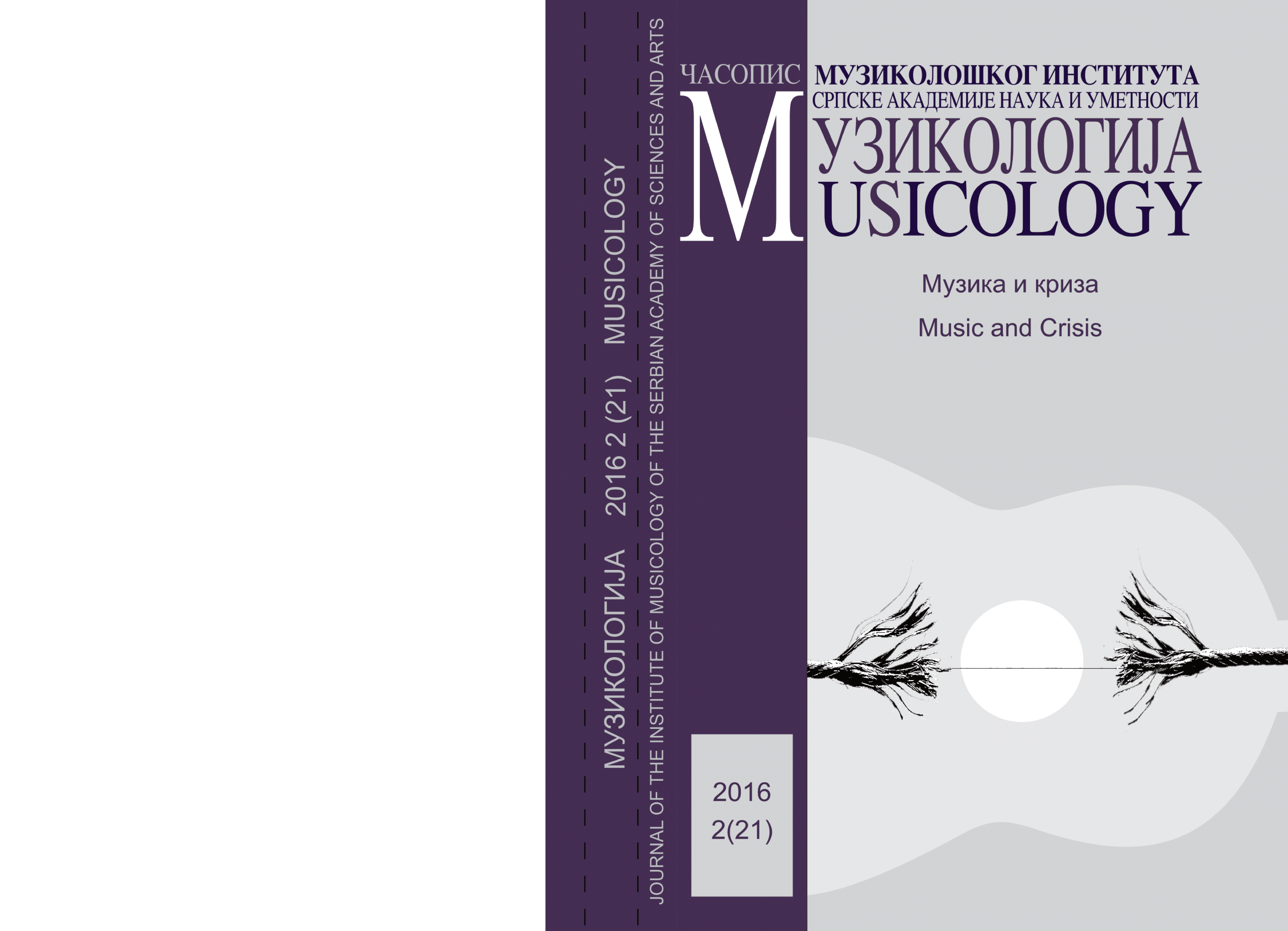Интерпретация классических музыкальных произведений в польской и русской анимации как основа творческого диалога
Keywords:
творческий диалог, классическая музыка, анимационный фильм, художник, композитор, творческий процесс, художественный образ, интерпретацияAbstract
Animated musical film, lying at the intersection of the two creative worlds and representing a dialogue between the musician and painter, is a living process of the visual interpretation of the artistic image of a musical work. A dialogue between the director of an animated film and the composer of a musical masterpiece can take place only if there is intonational (term used according to B. Asaf’ev’s writing) “equalization” of the artistic and validation determinants of merger-related, personal, emotional states. The author emphasizes that within the artistic image of an animated film, the inner essence of the “I” is made on the basis of the artist’s expression, the unity and consistency of colour, sound, plastic solutions, coupled with deep philosophical generalizations, cultural, and value-semantic in their nature. The article provides examples of interpretations of classical music masterpieces in animated films by Russian and Polish film-makers.
References
Ахиезер, С. (2008) Труды [Ahiezer, S. (2008) Works], Москва: Новый хронограф.
Бочкарева, О. В. (2013) „Диалог как ценностно-смысловое творчество в музыкальной культуре” [Bochkareva, O. (2013) “The Dialogue as the Value-Semantic Creativity in Musical Culture”], в В.В.Афанасьев (ред.) Ярославский педагогический вестник Т.1.– №2: 229–232.
Бочкарева, О. В. (2014) „Диалогическая природа художественного образа в детском анимационном музыкальном фильме” [Bochkareva, O. (2014) “The Dialogic Nature of the Artistic Expression in Children Musical Cartoon”], в В. В. Афанасьев (ред.) Ярославский педагогический вестник Т.2.– №4: 78–83.
Волошин, М. (2001) „Цикл ‘Париж’” [Voloshin, M. (2001) “Cycle Paris”] в В.А.Келдыш (ред.) Русская литература рубежа веков (1890 – 1920), ИМЛИ РАН: Наследие.
Йованович, Е. (2016) „Размышления о роли вокального педагога в сохранении навыков традиционного пения в современной время” [Jovanović, J. (2016) “Thoughts about the Role of the Vocal Pedagogue in Safeguarding of the Traditional Singing Skills Nowadays”], в О. В. Бочкарева (науч. ред.) Музыкальная культура и образование: инновационные пути развития: материалы I межд. науч.-практ. конф., Ярославль: РИО ЯГПУ: 70-76.
Мосусова, Н. Б. (2016) „Обобщение опыта преподавания истории музыки в Белградском университете искусств” [Mosusova, N. B. (2016) “Generalization of Experience in Teaching the History of Music at the Belgrade University of Arts”], в О. В. Бочкарева (науч. ред.) Музыкальная культура и образование: инновационные пути развития: материалы I межд. науч.-практ. конф.- Ярославль: РИО ЯГПУ: 112–114.
Пастернак, Б. (2010) Импровизация [Pasternak, B. (2010) Improvisation], Избранное, Москва: ЭКСМО.
Petrović, M., Milanković, V., Ačić, G. (2012) „Mjuzikl kao sredstvo integrativne nastave u muzičkoj pedagogiji” [“A Musical as a Tool of Integrative Teaching Process in Musical Pedagogy”], u F. Hadžić (urednik). Zbornik radova 8. Medjunarodnog simpozija Muzika u društvu (8–11. Novembar 2012), Sarajevo: Muzikološko društvo Sarajevo i Muzička akademija u Sarajevu: 206–215.
Downloads
Published
Issue
Section
License
Copyright (c) 2016 MUZIKOLOGIJA-MUSICOLOGY

This work is licensed under a Creative Commons Attribution-NonCommercial-NoDerivatives 3.0 Unported License.
You are free to:
- Share — copy and redistribute the material in any medium or format.
The licensor cannot revoke these freedoms as long as you follow the license terms.
Under the following terms:
-
Ауторство — You must give appropriate credit, provide a link to the license, and indicate if changes were made.
You may do so in any reasonable manner, but not in any way that suggests the licensor endorses you or your use. -
Некомерцијално — You may not use the material for commercial purposes.
-
NoDerivatives — If you remix, transform, or build upon the material, you may not distribute the modified material.
- No additional restrictions — You may not apply legal terms or technological measures that legally restrict others from doing anything the license permits.



